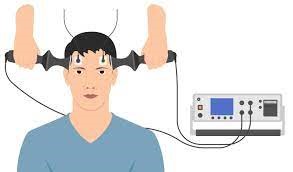A nurse is caring for a client who had a stroke 6 hr ago. Which of the following interventions should the nurse implement to reduce the risk of increased intracranial pressure (ICP)?
Flex the client's neck forward.
Group several nursing activities to be completed at one time.
Limit suctioning the client's airway to 30 seconds at a time.
Place the client in a quiet environment.
The Correct Answer is D
A. Flexing the client's neck forward can increase intracranial pressure by impeding venous drainage from the brain and increasing cerebral blood volume. Therefore, this choice is incorrect.
B. Grouping several nursing activities to be completed at one time can increase intracranial pressure by stimulating the client and causing fluctuations in blood pressure and heart rate. Therefore, this choice is incorrect.
C. Limiting suctioning the client's airway to 30 seconds at a time can reduce intracranial pressure by minimizing hypoxia and hypercarbia, which can cause cerebral vasodilation and increased cerebral blood volume. However, this intervention alone is not sufficient to prevent increased intracranial pressure, and suctioning should be done only when necessary and with caution. Therefore, this choice is partially correct but not the best answer.
D. Placing the client in a quiet environment can reduce intracranial pressure by minimizing sensory stimulation and promoting relaxation, which can lower blood pressure and heart rate and decrease cerebral metabolic demand. Therefore, this choice is correct and the best answer.
Nursing Test Bank
Naxlex Comprehensive Predictor Exams
Related Questions
Correct Answer is B
Explanation
A. "Perhaps you think the ECT is dangerous, but I've seen it have good results." This response is dismissive of the client's concerns and implies that the nurse knows better than the client.
B. "You have the right to change your mind about this procedure at any time." This response respects the client's autonomy and informs them of their rights.
C. "Everyone gets a little nervous about this procedure as the time for it approaches." This response minimizes the client's feelings and assumes that they are experiencing normal anxiety.
D. "Your doctor wouldn't have suggested ECT if they didn't think it would help you." This response shifts the responsibility to the doctor and does not address the client's fears.

Correct Answer is D
Explanation
A. Incorrect. Aspirin can trigger asthma attacks in some children and should be avoided.
B. Incorrect. The peak expiratory flow meter should be used daily, not just when the child has symptoms, and the highest reading should be recorded, not the average.
C. Incorrect. Carpet can harbor dust mites, mold, and other allergens that can worsen asthma. It is better to have hardwood or tile floors and washable rugs.
D. Correct. Influenza immunization can prevent serious complications from respiratory infections in children with asthma.
Whether you are a student looking to ace your exams or a practicing nurse seeking to enhance your expertise , our nursing education contents will empower you with the confidence and competence to make a difference in the lives of patients and become a respected leader in the healthcare field.
Visit Naxlex, invest in your future and unlock endless possibilities with our unparalleled nursing education contents today
Report Wrong Answer on the Current Question
Do you disagree with the answer? If yes, what is your expected answer? Explain.
Kindly be descriptive with the issue you are facing.
